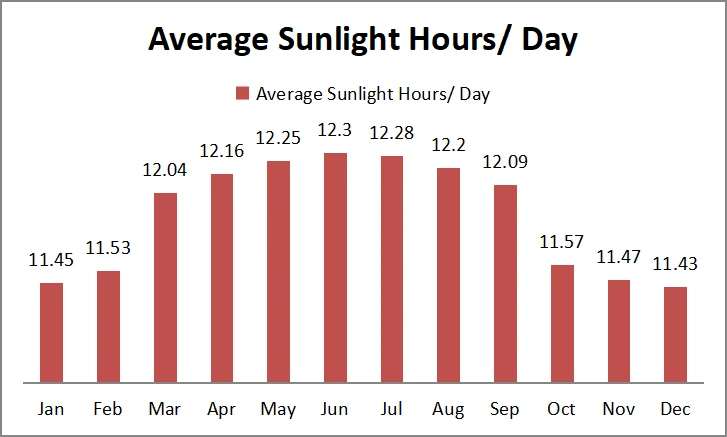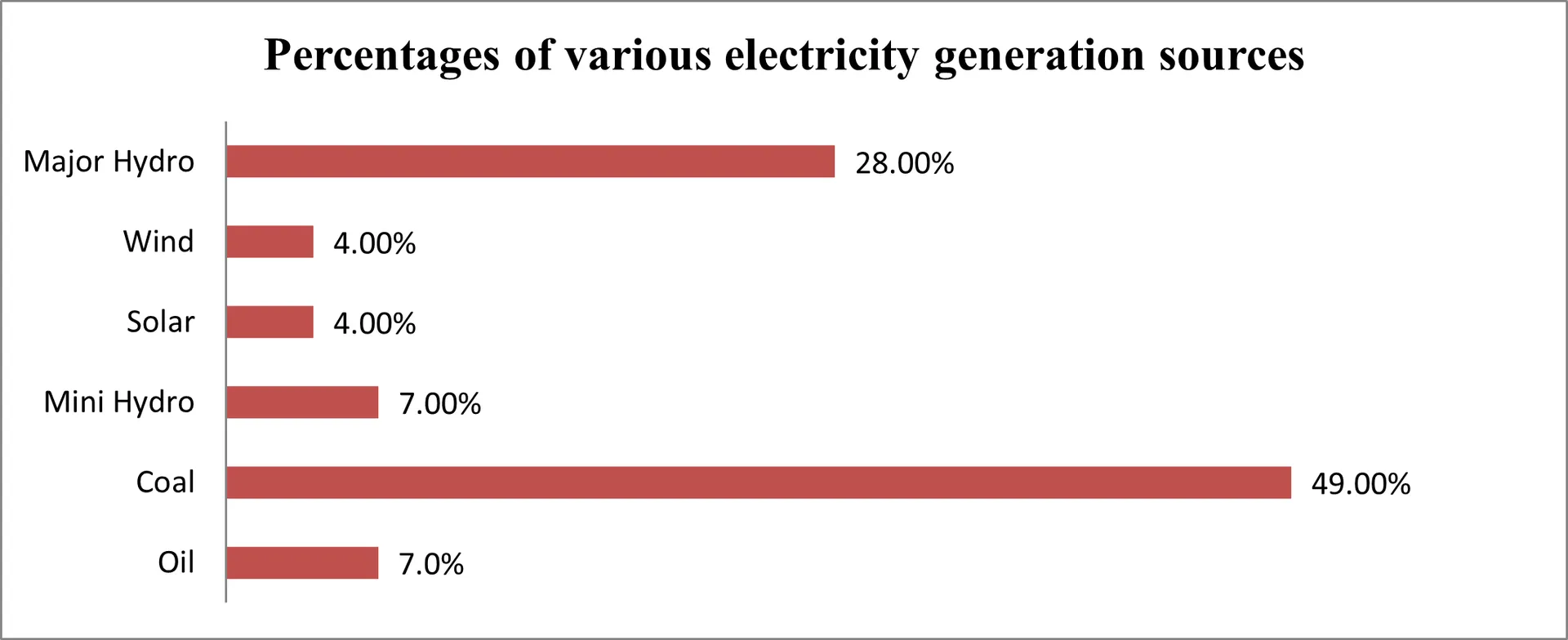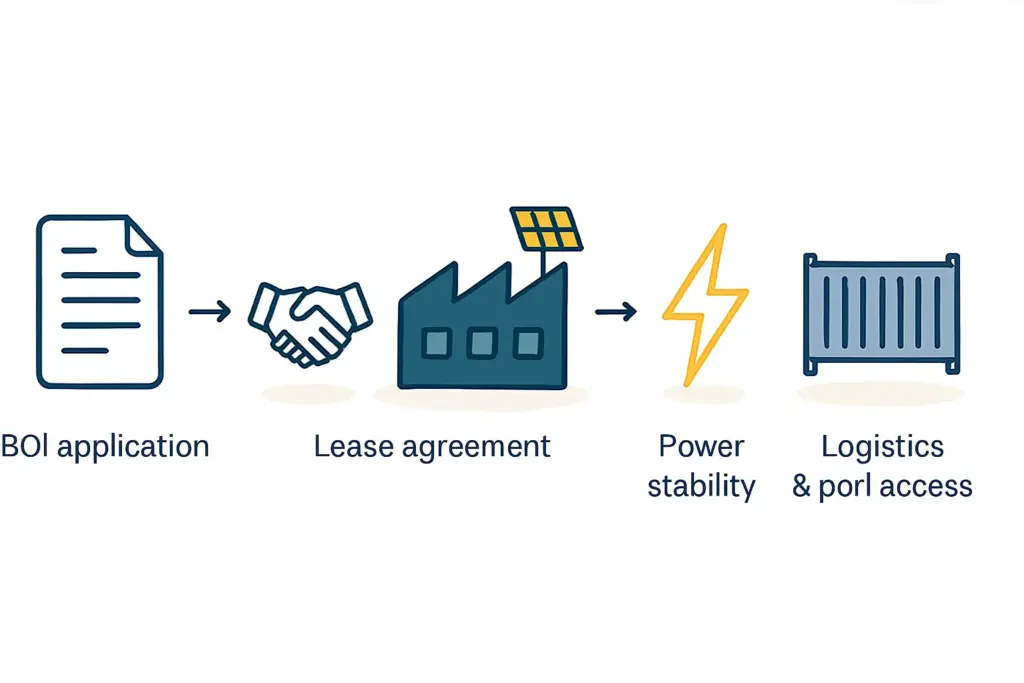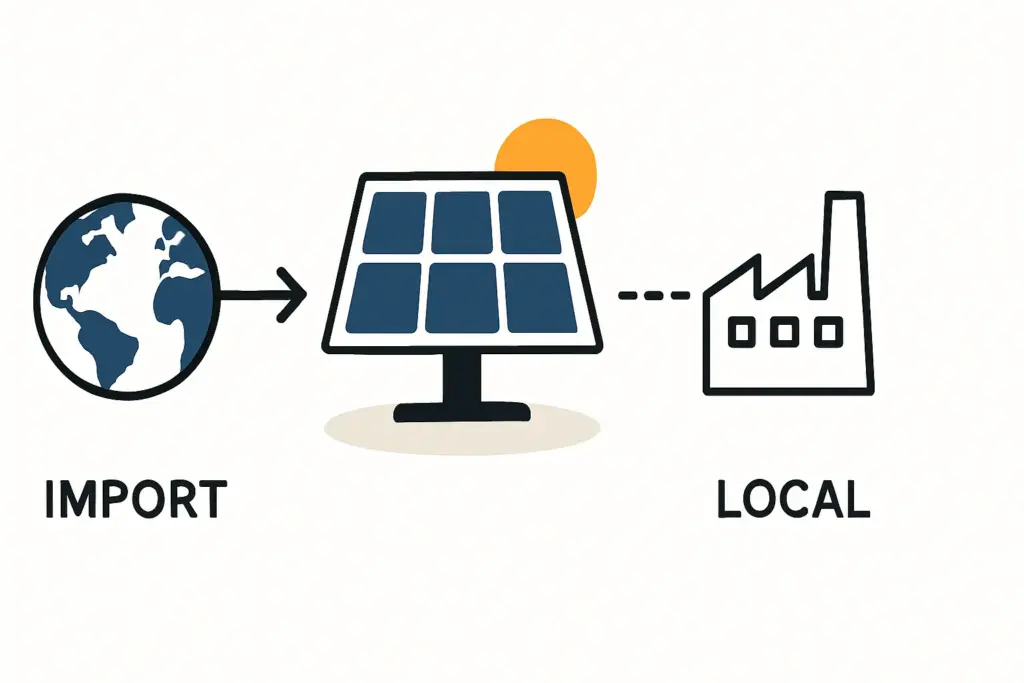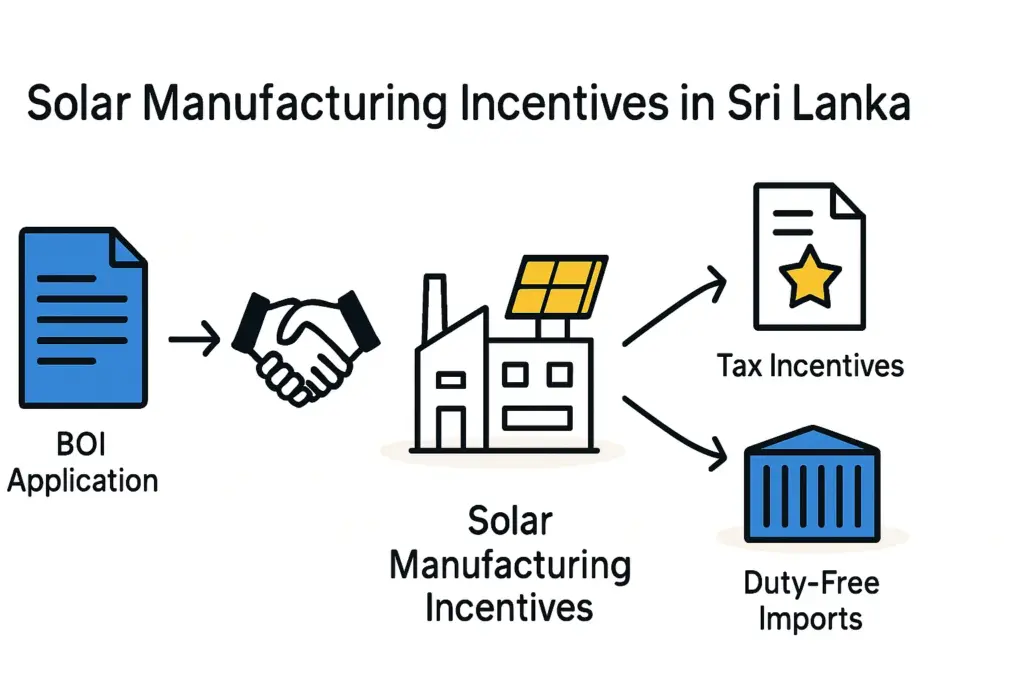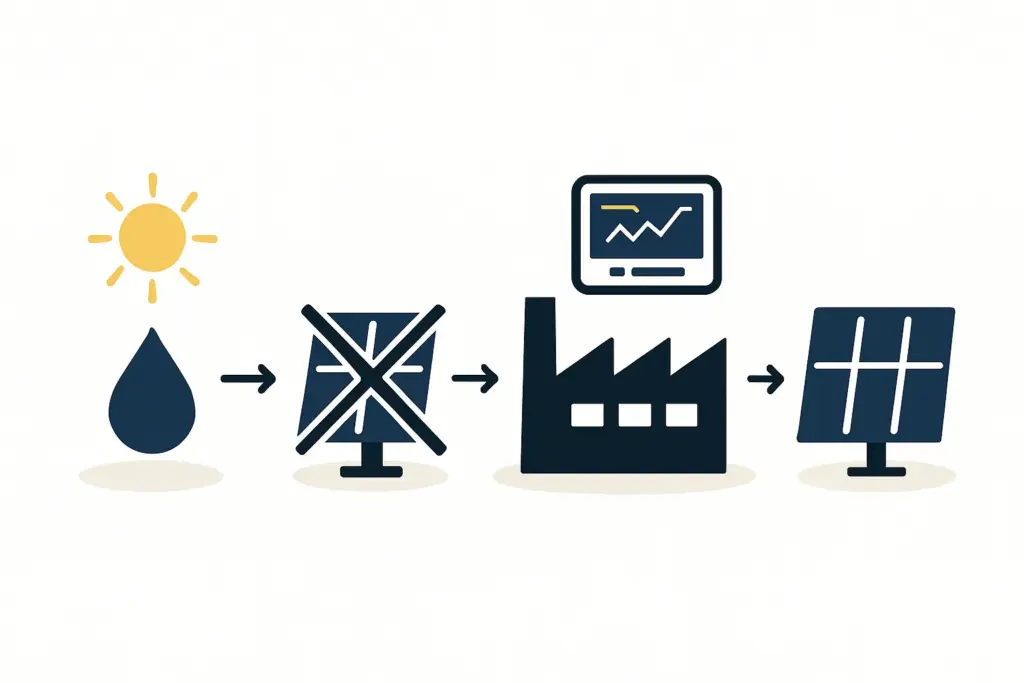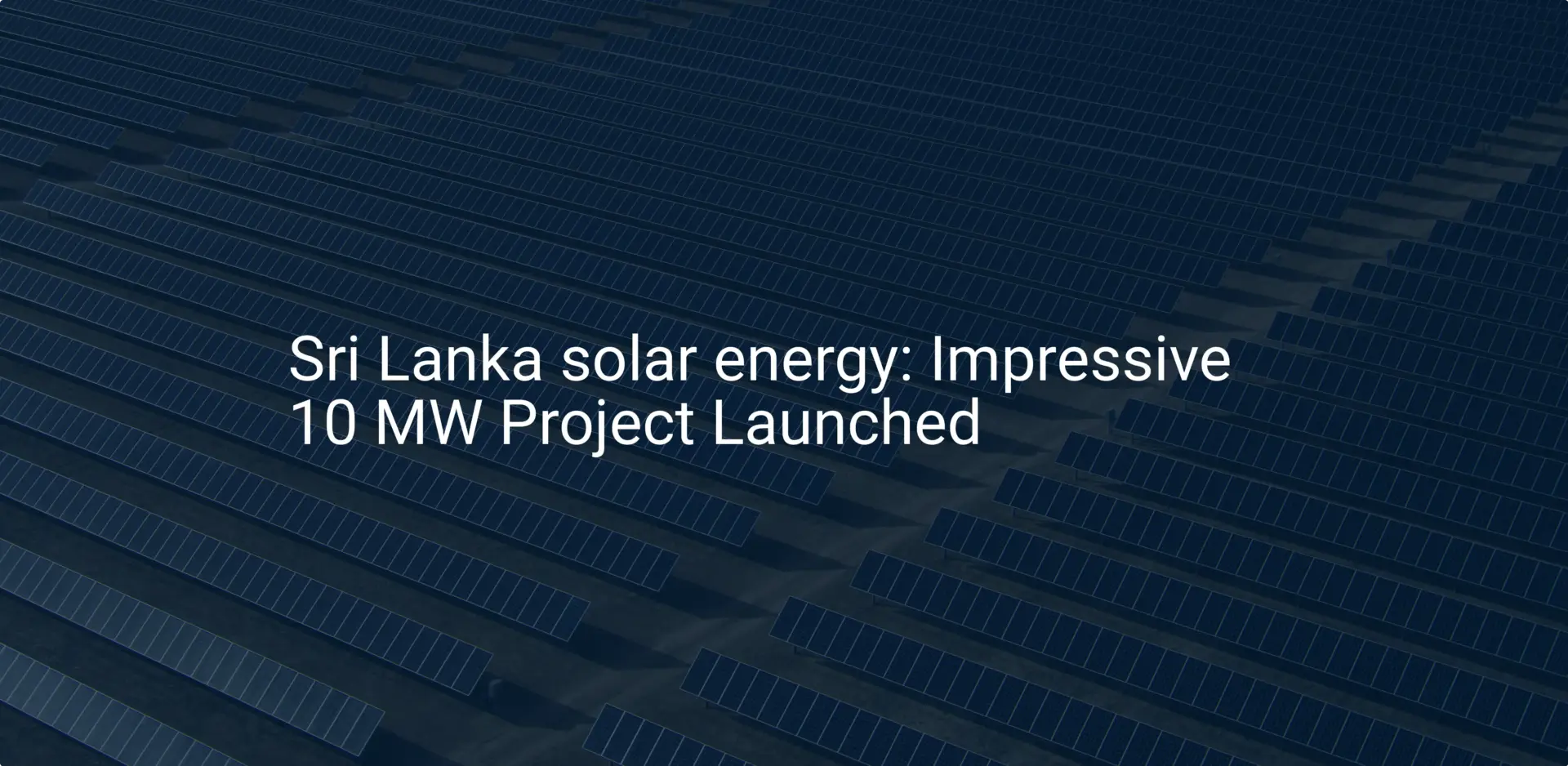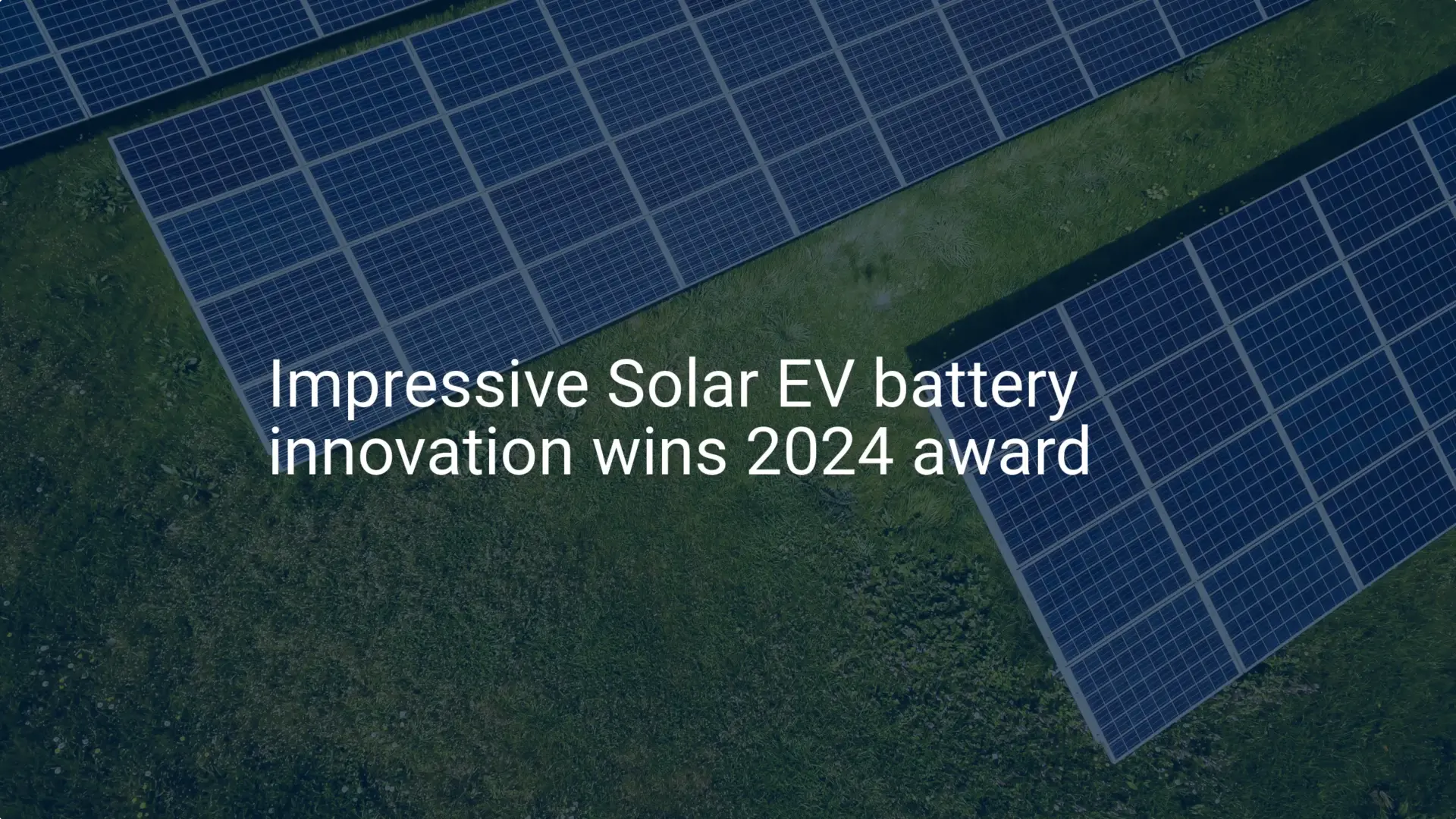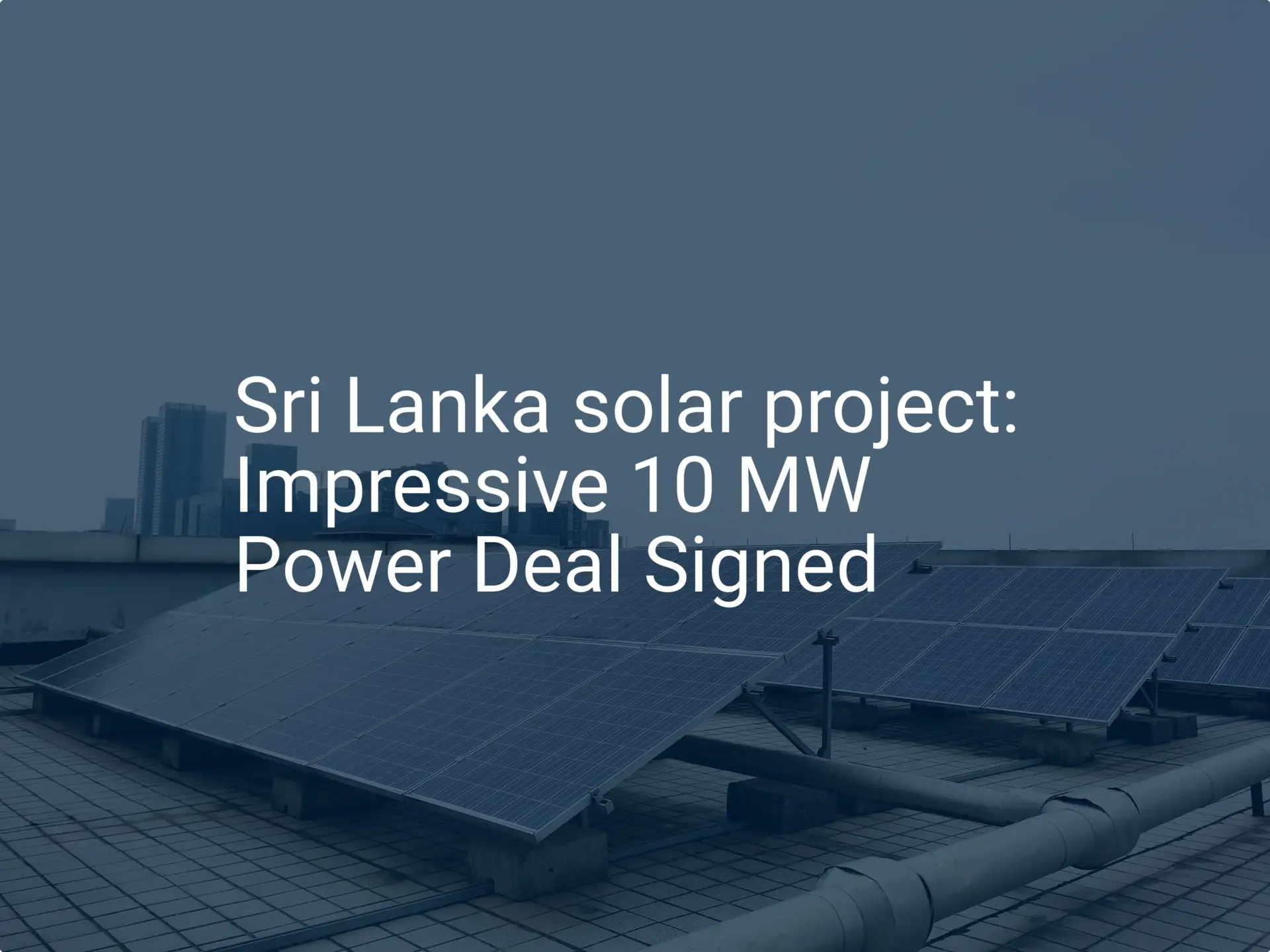Discover comprehensive insights into the statistics, market trends, and growth potential surrounding the solar panel manufacturing industry in Sri Lanka
- Climate Top. (2024). Daylight Hours in Colombo, Sri Lanka. Retrieved from https://www.climate.top/sri-lanka/colombo/sunlight/
- ENG. Parakrama Jayasinghe. (2023). A Fresh Look at Solar Energy. Retrieved from https://iesl.lk/SLEN/52/A%20Fresh%20Look%20at%20Solar%20Energy.php
- Global Petrol Prices. (2024). Sri Lanka Electricity Prices. Retrieved from https://www.globalpetrolprices.com/Sri-Lanka/electricity_prices/
- Sinalda. (2023). Voltage in Sri Lanka. Retrieved from https://www.sinalda.com/world-voltages/asia/voltage-sri-lanka/
- Joweet, P. (2023). Sri Lanka Launches Tender for 165 MW of Ground-Mounted Solar. Retrieved from https://www.pv-magazine.com/2024/03/15/sri-lanka-launches-tender-for-165-mw-of-ground-mounted-solar/
- Alta Vision. (2023). Solar Energy in Sri Lanka: Potential, Current State, Advantages, Challenges, and Future Outlook. Retrieved from https://altavision.lk/blog/sri-lanka/solar-potential
- Ratnayke, D. (2024). Economics of Electricity: A Supply Side Reflection. Sunday Times. Retrieved from https://sundaytimes.lk/online/opinion/Economics-of-Electricity-A-Supply-Side-Reflection/158-1145271
- Ministry of Power and Energy. (2023). Ministry of Power and Energy Progress Report – 2022. Retrieved from https://energymin.gov.lk/web/images/En_Progress_2022-compressed_1.pdf
- Economy Next. (2024). Sri Lanka Finally Ends Daily Power Cuts After Unpopular Tariff Hike. Retrieved from https://economynext.com/sri-lanka-finally-ends-daily-power-cuts-after-unpopular-tariff-hike-112547/
- Wikipedia. (2024). List of Power Stations in Sri Lanka. Retrieved July 10, 2024, from https://en.wikipedia.org/wiki/List_of_power_stations_in_Sri_Lanka
- Power Technology. (2024). Power Plant Profile: Hambantota Solar PV Park, Sri Lanka. Retrieved from https://www.power-technology.com/data-insights/power-plant-profile-hambantota-solar-pv-park-sri-lanka/
- Daily News. (2024). Sri Lanka’s First Large-Scale Solar Project Unveiled. Retrieved from https://www.dailynews.lk/2024/02/09/admin-catagories/breaking-news/390123/sri-lankas-first-large-scale-solar-project-unveiled/
- Ranasinghe, D. S. A., Waidyasekara, A., & Weerasooriya, D. (2023, July). Merits and demerits of off-grid solar systems: Key stakeholders’ perspectives. In World Construction Symposium – 2023. doi:10.31705/WCS.2023.63
- Asian Development Bank. (n.d.). Demand Analysis for Rooftop Solar Systems. Retrieved from https://www.adb.org/sites/default/files/linked-documents/50373-002-sd-01%20redacted.pdf
- World Salaries. (2024). Average Solar Photovoltaic Installer Salary in Sri Lanka for 2024. Retrieved from https://worldsalaries.com/average-solar-photovoltaic-installer-salary-in-sri-lanka/
- Worldometer. (n.d.). Population of Sri Lanka. Retrieved from https://www.worldometers.info/world-population/sri-lanka-population/
- Ikman. (n.d.). Warehouse and Storage for Rent in Sri Lanka. Retrieved from https://ikman.lk/en/ads/i/sri-lanka/commercial-property-rentals/warehouse-storage
- Global Water Forum. (n.d.). An Analysis of the Cost Structure of Water Supply in Sri Lanka. Retrieved from https://www.globalwaterforum.org/2012/09/22/the-cost-structure-of-water-supply-in-sri-lanka/
- Trade Gov. (2024). Sri Lanka – Country Commercial Guide. Retrieved from https://www.trade.gov/country-commercial-guides/sri-lanka-energy
- Wikipedia. (n.d.). Electricity Sector in Sri Lanka. Retrieved from https://en.wikipedia.org/wiki/Electricity_sector_in_Sri_Lanka
- Macro Trends. (n.d.). Sri Lanka Electricity Access 1960-2024. Retrieved from https://www.macrotrends.net/global-metrics/countries/LKA/sri-lanka/electricity-access-statistics
- International Energy Agency. (2024). Sri Lanka. Retrieved from https://www.iea.org/countries/sri-lanka/energy-mix
- Wickramaratne, K. (n.d.). Legal Framework for Solar Energy in Sri Lanka. Retrieved from https://www.german-energy-solutions.de/GES/Redaktion/DE/Publikationen/Praesentationen/2018/180703-iv-sri-lanka-legal-framework-wickramaratne.pdf?__blob=publicationFile&v=4
- Public Utilities Commission of Sri Lanka. (n.d.). Guidelines on Rooftop Solar PV Installation for Solar Service Providers. Retrieved from https://www.energy.gov.lk/images/energy-management/guideline-for-solar-pv-system-installation-for-solar-providers.pdf
- Sri Lankan Sustainable Energy Authority. (n.d.). Sooriyabala Sangaramaya (Battle for Solar Energy). Retrieved from https://www.energy.gov.lk/en/soorya-bala-sangramaya
- Public Utilities Commission of Sri Lanka. (2013). Grid interconnection mechanisms for off-grid electricity schemes in Sri Lanka (Final Report). Retrieved from https://www.pucsl.gov.lk/wp-content/uploads/2017/10/Final-Report-Web-Load.pdf

